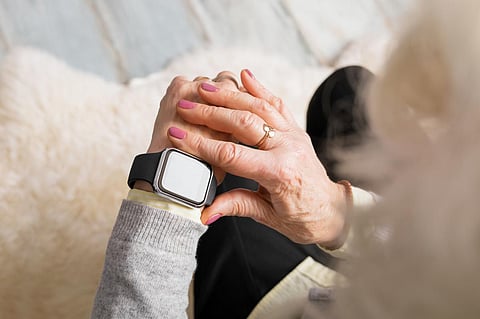WEDNESDAY, Sept. 25, 2024 (HealthDay News) -- A postoperative wearable device may improve physical activity and patient-reported dyspnea at six months after lung cancer surgery, according to a study published online Sept. 20 in JAMA Network Open.
Junghee Lee, M.D., from the Sungkyunkwan University School of Medicine in Seoul, South Korea, and colleagues evaluated the effects of a wearable device intervention on the recovery of physical activity, cardiopulmonary function, and health-related quality of life after lung cancer surgery. Thr analysis included 74 patients with suspected or confirmed non-small cell lung cancer scheduled for curative surgery more extensive than lobectomy and 120 controls not using the wearable intervention.
The researchers found that daily steps, moderate-to-vigorous physical activity, and six-minute walking distance decreased initially at two weeks after surgery but increased thereafter. Compared with the intervention group, the control group had a larger decrease in the number of daily steps from baseline (−4,877 versus −1,753 steps) at two weeks after surgery. The intervention group increased their daily steps by 2,220 from baseline to six months after surgery, while the control group did not return to their baseline number of steps. The intervention group also had better patient-reported physical function, less dyspnea, and less pain at two weeks after surgery and less dyspnea at six months after surgery versus the control group.
"This finding suggests a promising role for wearable devices in personalizing perioperative rehabilitation strategies," the authors write.
Abstract/Full Text
Editorial


